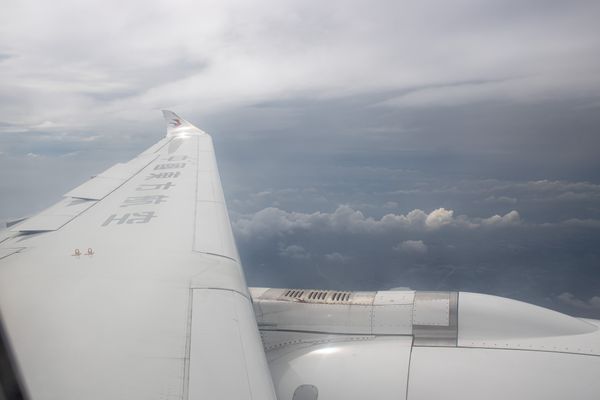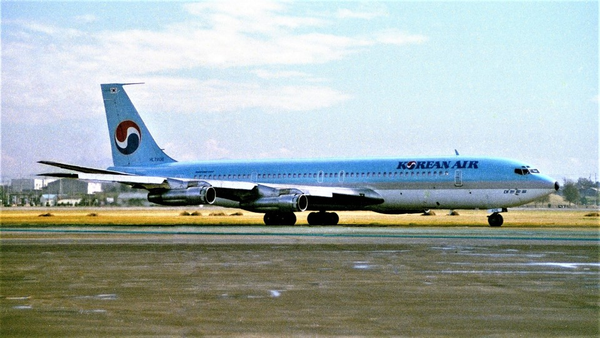As the COVID-19 pandemic is nearing its end, air travel is constantly increasing, with an estimated 4.7 billion passengers expected to travel in 2024, beating the 4.5 billion passengers that traveled in 2019. The increase in air traffic shows how people are recovering from the pandemic and returning to travel, either for business or leisure.
Unfortunately, this also means more fuel burn is caused by commercial jets, leading to environmental pollution. Therefore, a new type of aviation fuel, called sustainable aviation fuel (SAF), was invented to reduce air pollution. There are many ways that SAF can improve the environment.

The Environmental Impact of Air Travel
Just like cars, aircraft need fuel to run their engines and fly. The fuel used for most jet aircraft is called jet fuel, and the most commonly used fuels for commercial aviation are Jet A and Jet A-1. The two are mostly similar except for the fact that Jet A-1 has a lower freezing point of −47 °C (−53 °F), lower than Jet A, which freezes at −40 °C (−40 °F). When used, these jet fuels produce carbon dioxide (CO2).
CO2 is the main culprit of global warming, which aggravates the Earth's greenhouse effect, as it absorbs infrared radiation. As millions of flights take place around the world annually, it is said that flying produces over 1 billion tons of CO2 annually. This amounted to 2.5% of the total CO2 emissions in 2018 and is the equivalent of 217,391 times more CO2 emitted by an average car.

A New Type of Aviation Fuel
To address the polluting problems, a need for a new type of aviation fuel was prompted. With biofuels rising as the new solution for environmental pollution, the aviation market found the answer to reducing pollution: using sustainable biofuel for flying. Sustainable biofuels do not use oil or fossil fuels and rely on other materials, such as plants, for a source of oil. As a result, it emits a lower amount of CO2 compared to the typical fuel that is used for cars and planes.
SAF can be seen as a biofuel that is adequately modified for use on aircraft engines. According to Airbus, SAF can reduce CO2 emissions by 80%. Several standards make a biofuel viable to use as SAF, and such standards are set by institutes such as the Roundtable For Sustainable Biofuels.

Since Virgin Atlantic conducted its first flight test using SAF in 2008, several airlines have started using SAF for their flights. By mixing SAF with traditional jet fuel, aircraft were able to reduce air pollution while retaining the performance of conventional jet fuel. According to the IATA, more than 180,000 flights have used SAF mixtures until June 2019.
The next breakthrough was when Virgin Atlantic performed Flight100, a flight powered using 100% SAF for the first time. This flight used a Boeing 787 Dreamliner, taking off from London Heathrow Airport (LHR) to New York John F. Kennedy Airport (JFK). Although there were no passengers onboard this transatlantic flight, it is seen as a significant milestone for developing and using SAF.

Other Solutions for Sustainable Air Travel
While SAF can be seen as a promising solution for reducing pollution caused by air travel, other solutions also exist. One example is electric-powered aircraft. Like electric cars, electric-powered aircraft use electric motors as a driving force rather than a jet engine or pistol engine. A famous example is NASA's Helios aircraft, which reached an altitude of over 96,000 feet.

Another benefit other than zero-emission flight is that electric aircraft can significantly reduce noise pollution, as electric motors are much quieter than combustion engines. Jet engines can produce noise up to 140 decibels (dB) on take-off, which can cause immediate harm to the human ear, while a typical pistol engine-powered Cessna aircraft can reach up to 60 dB. In contrast, an electric-powered plane can take off, causing as little as 20 to 22 dB.
While the Pipistrel Velis Electro is currently the only type-certified electric aircraft, research is being conducted on electric airliners, such as NASA's NASA Electric Testbed Aircraft (NEAT). Airbus, Boeing, and Embraer are also working on electric aircraft. Also, Wright Electric, an American startup, is working on a modified British Aerospace 146 aircraft, intending to fly the airplane starting in 2026.

Conclusion
With air travel increasing more than ever, concerns about the environmental impact of air travel are emerging. With governments announcing zero-emission goals until 2050, airlines need to comply with sustainable solutions for the aviation industry. Along with other remedies, SAF is the key to reducing CO2 emissions, with airlines implementing this new fuel into their operations.
No "Mate's Rates" in the Sky as Qantas Bans All Staff (Including CEO) From New A350 First Class » VIDEO: What It's Like Onboard China's COMAC C919 » What You Don't Know About Airport Operations That Go Overnight »
Comments (0)
Add Your Comment
SHARE
TAGS
INFORMATIONAL Sustainability SAF Sustainable Aviation Fuel Virgin Atlantic Electric Aircraft Future Innovation Sustainable Aviation NASA Travel DemandRECENTLY PUBLISHED
 VIDEO: What It's Like Onboard China's COMAC C919
We flew onboard China Eastern's COMAC C919 to experience China's homegrown narrow-body up close. From seat comfort to cabin layout to noise levels to tech: how does it really compare with the Boeing 737 and Airbus A320? This review puts all three workhorses under the same spotlight.
TRIP REPORTS
READ MORE »
VIDEO: What It's Like Onboard China's COMAC C919
We flew onboard China Eastern's COMAC C919 to experience China's homegrown narrow-body up close. From seat comfort to cabin layout to noise levels to tech: how does it really compare with the Boeing 737 and Airbus A320? This review puts all three workhorses under the same spotlight.
TRIP REPORTS
READ MORE »
 KAL858: The North Korean Bombing that Shocked the World
Among the 99 passengers boarding Korean Air Flight 858 on November 29, 1987, few could imagine their journey would end as one of aviation's darkest mysteries.
STORIES
READ MORE »
KAL858: The North Korean Bombing that Shocked the World
Among the 99 passengers boarding Korean Air Flight 858 on November 29, 1987, few could imagine their journey would end as one of aviation's darkest mysteries.
STORIES
READ MORE »
 Ghost Networks: The Rise, Fall, and Revival of Fifth-Freedom Flights
Fifth-freedom flights — routes where an airline flies between two countries outside its home base — have always lived in aviation's twilight zone. We chart their rise, their near-disappearance, and the surprising markets where they still thrive today. Then we take you on board a special Seoul-Tokyo fifth-freedom flight to show how the experience stacks up against a typical regional carrier.
TRIP REPORTS
READ MORE »
Ghost Networks: The Rise, Fall, and Revival of Fifth-Freedom Flights
Fifth-freedom flights — routes where an airline flies between two countries outside its home base — have always lived in aviation's twilight zone. We chart their rise, their near-disappearance, and the surprising markets where they still thrive today. Then we take you on board a special Seoul-Tokyo fifth-freedom flight to show how the experience stacks up against a typical regional carrier.
TRIP REPORTS
READ MORE »



